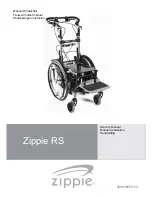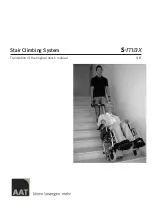
QM-7 SERIES SERVICE MANUAL
PAGE 1.4
JANUARY 2012
SUNRISE MEDICAL
If mishandled batteries can be dangerous and hazardous.
•
All mobility batteries, whether wet type or gel/sealed type, contain
lead and sulfuric acid. Both of these materials are toxic and in the
case of sulfuric acid, highly corrosive. Additionally, when batteries are
charged, they produce hydrogen gas which is “highly”
fl
ammable and
can cause explosion. This is why proper handling is mandatory at all
times.
•
Battery explosion - This is frequently the result of too low an acid/
electrolyte level in the battery, which allows high concentrations of
hydrogen to build up. This is possible with all batteries if improper
charging or battery failure occurs, but not common in gel/sealed
batteries.
•
< KEEP SPARKS AND FLAMES AWAY FROM BATTERIES >
•
Burns - dropping a wrench or screwdriver across battery terminals
results in sparks, and intense heat. Improper assembly of battery
boxes or battery box wiring may short the battery through the wiring
and produce a possible electrical
fi
re.
•
Electronic damage - batteries that are improperly wired can short out
electronic chair components resulting in expensive repairs.
•
Pollution - improper disposal of batteries could damage the
environment. All batteries should be disposed of through a reliable
battery recycler.
Battery Charge Cycle Illustration
Typical Flooded Battery
As battery discharges, the sulfate from the electrolyte forms on the plates.
As battery recharges, the sulfate is driven back into the electrolyte
POS = PbO2
NEG = Pb
ACID = H2SO2
POS = PbSO4
NEG = PbSO4
ACID = H2O
Section 1
Health and safety (cont.)









































